Discovering China’s Silk Road: A Journey Through History and Culture
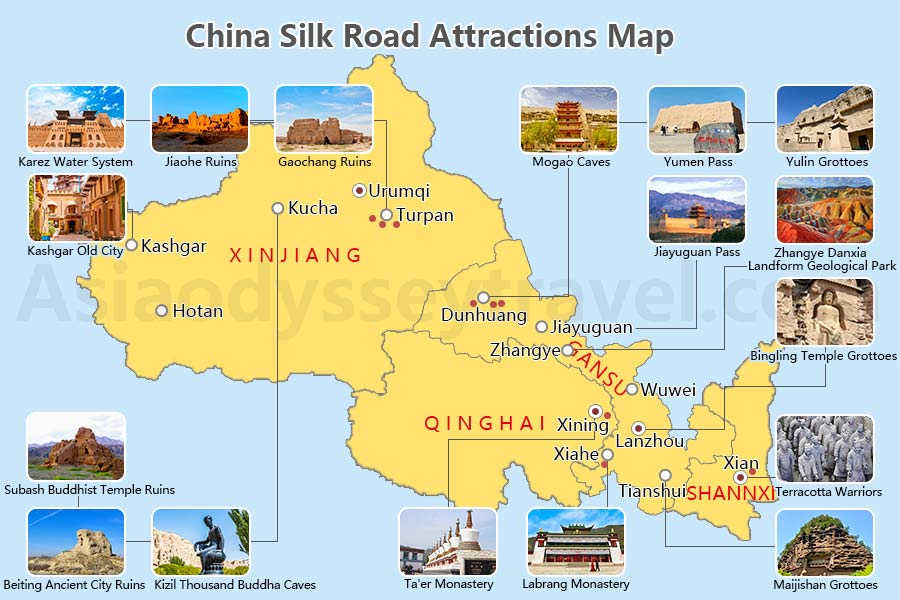
Imagine embarking on a timeless adventure that weaves through vast deserts, towering mountains, and bustling ancient cities, connecting the heart of China to the world. The China Silk Road isn’t just a historical footnote—it’s a living tapestry of trade, culture, and exploration that continues to captivate travelers today. As a gateway to ancient trade routes in China, this legendary network offers unparalleled insights into the country’s rich heritage. Whether you’re planning a Silk Road travel guide adventure or dreaming of immersive China cultural tours, understanding the historical China routes will transform your journey.
Here at jusha.travel, we love sharing tips to make your China journey unforgettable! In this post, we’ll guide you through the origins, routes, daily life, cultural exchanges, and enduring legacy of the Silk Road, blending historical facts with practical advice for modern explorers.
The Origins of the Silk Road: How China Opened the World’s Most Famous Trade Route
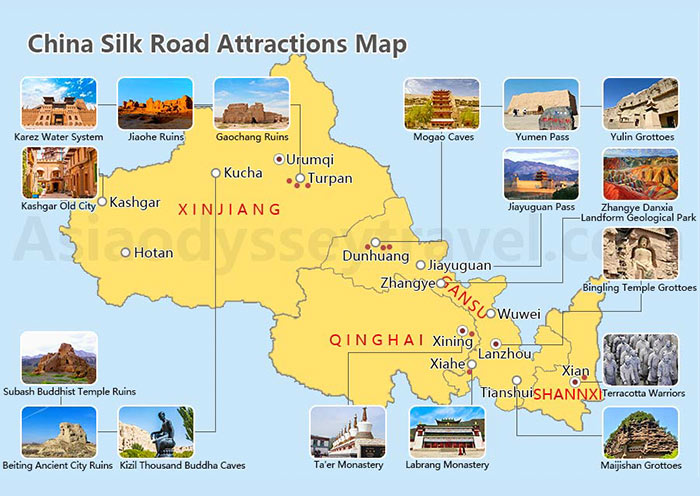
The story of the China Silk Road begins over 2,000 years ago, during the Han Dynasty around 130 BCE. It all started with the visionary explorer Zhang Qian, sent by Emperor Wu to forge alliances in the West. His journeys uncovered a world brimming with opportunities for exchange, sparking the creation of these ancient trade routes in China. What began as military expeditions soon evolved into a thriving commercial network, with silk—the luxurious fabric that gave the route its name—flowing westward alongside porcelain, tea, and paper.
Xi’an, then known as Chang’an, served as the eastern terminus, a bustling hub where merchants from across Eurasia gathered. For those crafting a Silk Road travel guide, starting in Xi’an is essential; it’s home to the Terracotta Warriors and the fascinating Muslim Quarter, blending ancient history with vibrant street food. Fun fact: The Silk Road wasn’t just about goods; it introduced horses from Central Asia to China, revolutionizing cavalry and warfare.
If you’re exploring China’s ancient capitals, check out our post on the Top 10 Must-Visit Cities in China for 2025 Adventures, which spotlights Xi’an as a must-see for history buffs.
For deeper reading, learn more about Zhang Qian’s pivotal role in this Wikipedia overview or the timeline at World History Encyclopedia.
Mapping the Silk Road: Key Routes from Xi’an to the Mediterranean
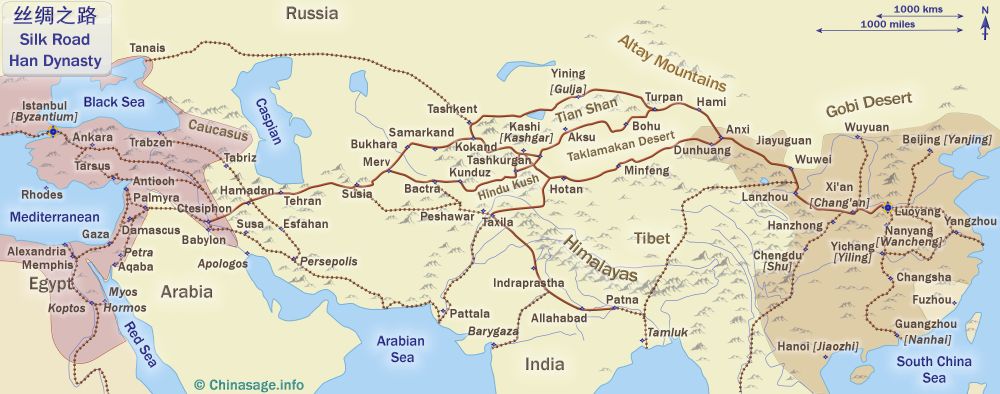
Spanning over 6,400 kilometers, the historical China routes formed a complex web rather than a single path, adapting to rugged terrains like the Gobi Desert and Pamir Mountains. The Northern Route snaked through the Hexi Corridor in Gansu Province, past the iconic Mogao Caves in Dunhuang, and into Xinjiang’s oases like Turpan and Kashgar. Meanwhile, the Southern Route ventured through the Karakorum Mountains, linking to modern-day Pakistan and Iran, with maritime extensions reaching as far as Egypt and Italy.
A lesser-known gem is the Southwestern Route, or Tea Horse Road, from Yunnan and Sichuan, trading tea for horses with Tibetan and Southeast Asian communities. These paths weren’t static; they shifted with politics, climate, and innovation. For China cultural tours, retracing these routes offers breathtaking scenery—think camel treks in the Taklamakan Desert or hikes along the Great Wall’s western extensions.
Practical tip: High-speed trains now connect Xi’an to Lanzhou, making the first leg of your Silk Road travel guide journey swift and scenic. Pack layers for the extreme temperature swings, and download apps like Trip.com for real-time bookings. If you’re plotting your itinerary, our guide on How to Plan a Budget-Friendly Trip Across China’s Top Cities includes tips for navigating these historic paths affordably.
Visualize the expanse with this map from Advantour or explore routes detailed in The China Guide.
Life Along the Silk Road: Commerce, Caravans, and Thriving Cities
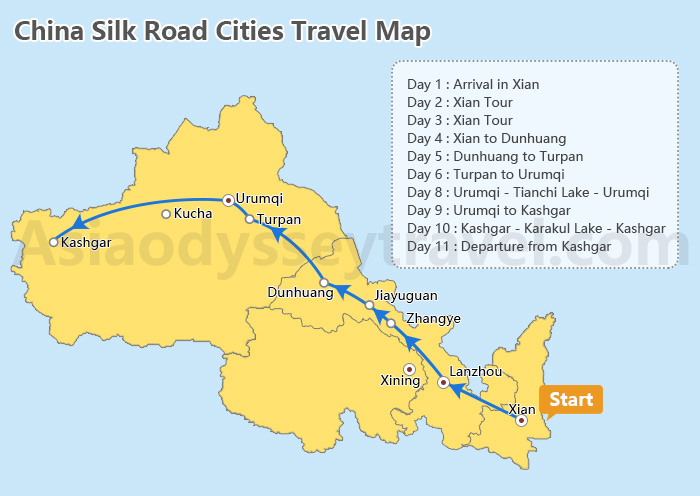
Daily life on the ancient trade routes in China pulsed with the rhythm of camel caravans, laden with spices, jade, and gold. Merchants, often Sogdians from Central Asia, traveled in protected convoys, stopping at caravanserais—fortified inns that doubled as cultural melting pots. These waystations fostered trade in everything from horses to ideas, with multilingual bazaars echoing the haggling of Persians, Arabs, and Han Chinese.
Cities like Dunhuang, with its 1,000 Buddhist caves adorned in murals, and Kashgar’s Sunday markets became cosmopolitan beacons. Here, Uyghur cuisine shines: Try lamb kebabs or hand-pulled noodles, a fusion born from Silk Road exchanges. China cultural tours thrive in these spots, where you can witness traditional bazaars or join a homestay with local families.
Interesting insight: The Silk Road boosted women’s roles in trade, as some Sogdian businesswomen led caravans. For foodies, pair your travels with our article on How to Savor Authentic Dim Sum in Hong Kong’s Best Spots, extending the culinary thread from Silk Road spices to modern Cantonese delights.
Delve into caravan life via China Highlights.
Cultural Exchange and the Tang Dynasty Peak: Ideas, Art, and Religion on the Move

The China Silk Road was a superhighway for culture, spreading Buddhism from India to China via monks like Xuanzang, whose pilgrimage inspired the classic novel Journey to the West. Christianity and Islam followed suit, creating diverse religious landscapes. Art flourished too—Greco-Buddhist statues in Xinjiang blend Hellenistic and Eastern styles, while paper-making techniques traveled west, paving the way for the printing press.
The Tang Dynasty (618–907 CE) was the zenith, with Xi’an swelling to over a million residents, a global metropolis of poets, traders, and diplomats. Festivals featured multicultural dances, and innovations like gunpowder began their journey outward. For modern travelers, this era’s legacy invites historical China routes explorations, like visiting the Bezeklik Caves or sampling Tang-style teas in Luoyang.
Tech twist: Today’s Silk Road echoes in China’s Belt and Road Initiative, linking ancient paths with high-speed rails and digital trade. Curious about innovations? Read our post on What’s New in China’s Tech Scene: Innovations to See in 2025.
Explore Tang influences in The China Guide or religious spreads at Advantour.
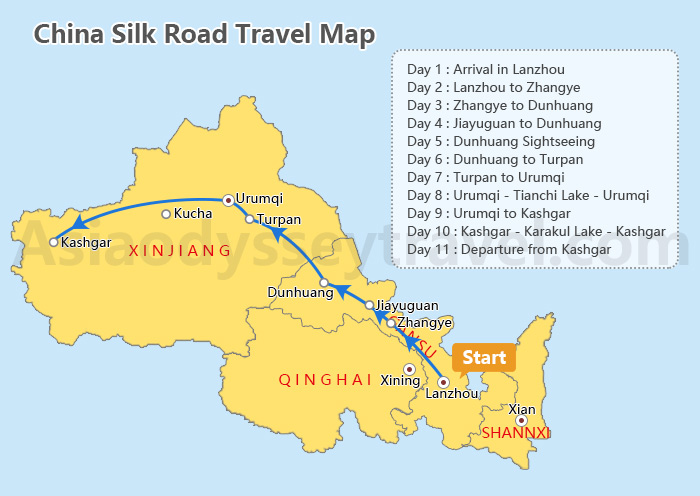
The Legacy: Why the Silk Road Still Inspires Today’s Travelers
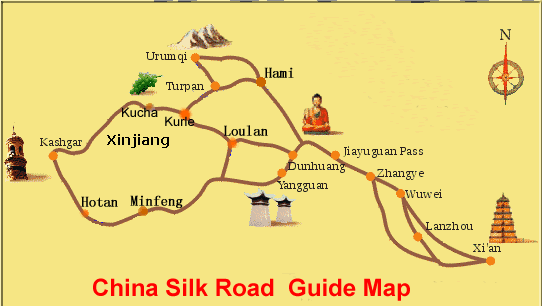
Though the classic routes faded by the 15th century due to Mongol decline and sea trade’s rise, the ancient trade routes in China left an indelible mark. Cities like Samarkand and Venice owe their splendor to Silk Road wealth, and global cuisines—think Persian influences in Chinese stir-fries—stem from these exchanges. Today, UNESCO sites along the path preserve this heritage, drawing eco-conscious adventurers.
For a sustainable Silk Road travel guide, opt for train journeys over flights and support local artisans. The route’s story of connectivity mirrors our interconnected world, inspiring China cultural tours that celebrate diversity. If visa planning is your next step, our essential guide China Visa Requirements: Essential Guide to Planning Your Trip has you covered. And for broader inspiration, see Best Places to Visit in China: Discover Iconic Landmarks and Hidden Gems.
The Silk Road’s decline is detailed in Wikipedia, with modern legacies at Advantour.
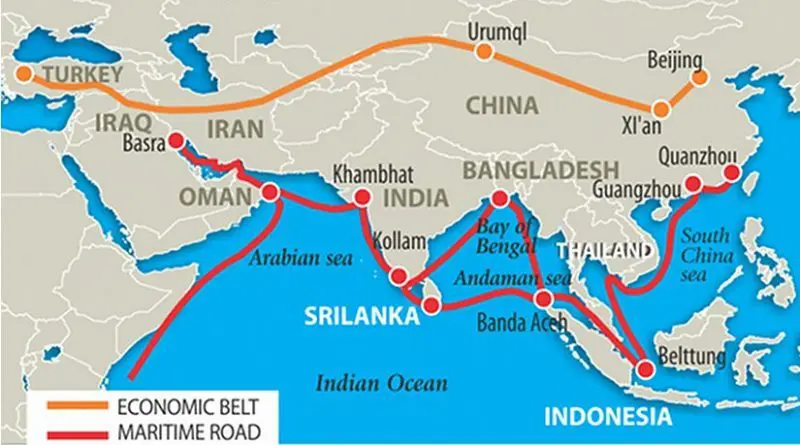
In conclusion, discovering the China Silk Road is more than a trip—it’s a bridge to humanity’s shared past, blending historical China routes with timeless wonders. From Xi’an’s grandeur to Xinjiang’s deserts, these paths promise adventure, reflection, and connection. At jusha.travel, we’re passionate about guiding you through China’s treasures.
Ready to lace up your boots? Share your Silk Road dreams in the comments below, explore more at jusha.travel for additional China cultural tours, or dive into our related articles. Your epic journey awaits!
Word count: 1,128

